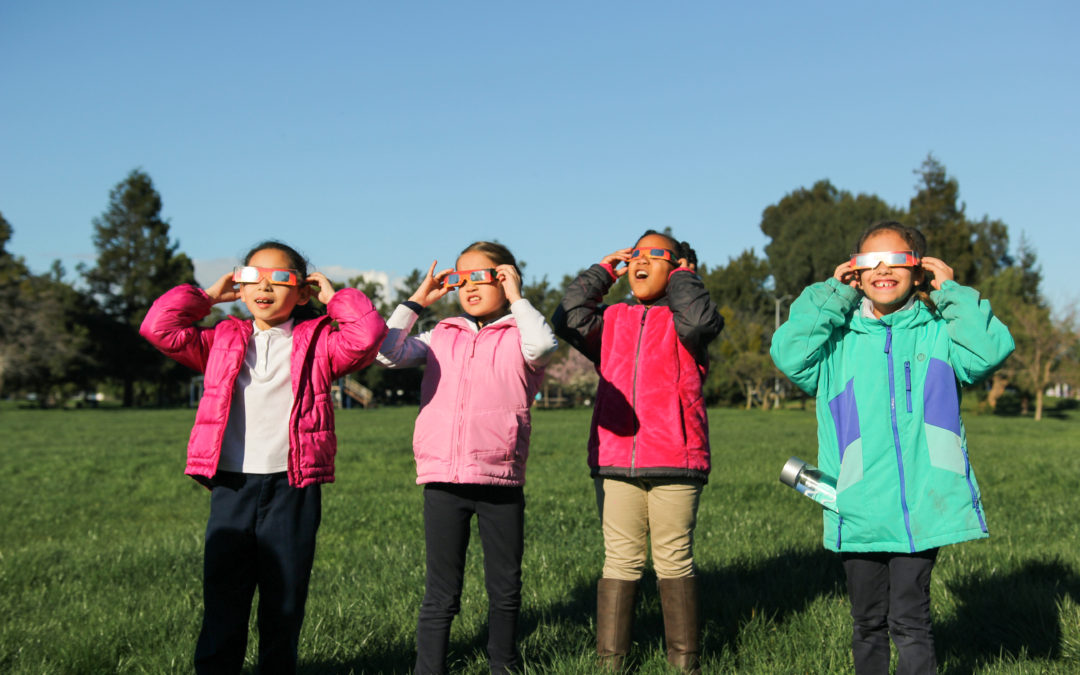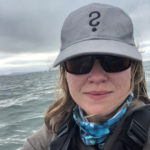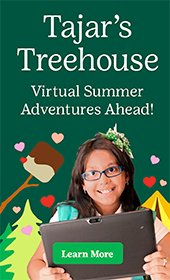It’s not everyday that you have the chance to see a remarkable space phenomenon. On Monday, August 21, 2017, the Moon will pass between the Earth and Sun. When these three astronomical objects line up, something scientists call syzygy, the Moon will cast a shadow on Earth. The shadow will race across the United States at over 1,200 miles per hour, faster than the speed of sound. When the shadow passes over us, we will experience a solar eclipse.
In Northern California, we will experience a partial solar eclipse, where you need to use safe viewing techniques to look at the Moon as it blocks part of the Sun. The eclipse will begin around 9 a.m. By about 10:15 a.m., the Moon will block (or occult) at least 78% of the Sun.
Looking to experience the magnificence of a total solar eclipse? If you can make it to the path of totality, a narrow arc stretching across the United States from Oregon to South Carolina, the Sun will be completely covered, darkness will descend, and you’ll be able to view the Sun’s corona without eye protection for a short time. Depending on where you are, August 21 total solar eclipse may last up to 2 minutes and 40 seconds.
No matter where you’ll be on the big day, we encourage every Girl Scout to learn more about this wonder of space science and go outside to experience it in person! But before you do, here are 8 surprising facts and 21+ resources to help you prepare for the eclipse on 8/21/2017:
8 Surprising Facts about Solar Eclipses
- You don’t need fancy tools to view a solar eclipse. Find or make a DIY pinhole projector, or pick up ISO certified solar eclipse glasses to safely watch the eclipse. Never look directly at the sun.
- A total solar eclipse is an amazing cosmic coincidence. In the distant future, as the Moon moves farther from Earth, the Moon will appear smaller than the Sun, and we will no longer have total solar eclipses on Earth.
- Solar eclipses are fairly common on Earth these days, but you’ll probably need to travel if you want to experience totality in the future. The exciting thing about August’s eclipse is that it passes over land, so you don’t have to travel to a random, remote island to view it. Most of the United States is just a one or two day car ride away from totality!
- You can still find places to stay on the path of totality. Most hotels and campsites have been booked for a while, but special eclipse sites like Oregon Solarfest still have space available. Heavy traffic is expected, so plan accordingly and try to arrive at least a day or two ahead of time.
- Experiencing a total eclipse is awe-inspiring. There’s even a name for a person who chases solar eclipses: an umbraphile, or lover of shadows.
- If the Moon’s orbital path wasn’t slightly tilted from the Earth’s orbit, we’d have an eclipse every month. It’s also why solar and lunar eclipses happen in pairs or sets. In August, there will also be a partial lunar eclipse two weeks before the solar eclipse, although it won’t be visible in the U.S.
- The August 2017 solar eclipse will also be the most recorded in history. Projects like the Eclipse Megamovie, Citizen CATE, and the Eclipse Ballooning Project will compile images from astronomers, students, and science enthusiasts like you contributing as citizen scientists.
- Thanks to NASA’s funding of the Girl Scout Stars project, GSNorCal has been collaborating with experts at the SETI Institute, ARIES Scientific, Astronomical Society of the Pacific, and University of Arizona to develop a free Eclipse Guide for Girl Scouts and additional resources. The Eclipse Box is packed with everything you’ll need – including a pair of eclipse glasses for each girl! – and is available through GSNorCal STEM Box rentals. GSNorCal resident camps are also getting in on the space science fun, with counselors engaging campers with Eclipse Box activities throughout the summer.
Whether your girls enjoy the outdoors, STEM, or arts & crafts, here are some links and resources to help them get ready to launch on this stellar adventure:
21+ Resources and Activities
Be Prepared
- Look up when to see the eclipse based on your location.
- Check if your school has plans to head outside or watch totality online.
- Out of school? Find a local event through NASA or your local library listings.
- For those on the go, there’s even an app from the Exploratorium.
- Get your certified solar glasses soon, available online at the Girl Scouts Store, ASP Store, and other retailers.
- Make an Eclipse Viewer (Eclipse Guide pages 32-33)
- Pick up the Girl Scout 2017 Eclipse Patch
- Find trustworthy safety advice by experts and get informed about common misconceptions
Get Hands-On with Eclipse Activities
- Select from 14 hands-on activities in the Eclipse Guide, such as:
- Model the phases of the Moon (26-27)
- Create a Yardstick Eclipse (page 28-29)
- Draw a total solar eclipse (page 34-35)
- Add the “A” for art to STEM with these eclipse maker/STEAM activity ideas
- Check out NASA for more activities and resources, including ways to share solar eclipse citizen science and art
Explore More Eclipse Science
- Got questions? Find answers at NASA’s 2017 Eclipse site
- Watch videos from NASA and the Exploratorium
- Read free booklets, like Solar Science and The “American Eclipse”
- Read story books like The Big Eclipse, When the Sky Goes Dark, and Jordan and the Solar Eclipse
- NASA also has an abundance of Spanish-language resources
- Connect with local amateur astronomers in Night Sky Network clubs. They’re excited to share Sun and eclipse science leading up to the August event.
Enjoy the Beauty of Space
- Find eclipse posters by Tyler Norgen and the Great American Eclipse
- Scroll through royalty-free images of past solar eclipses
- Send a letter with a Total Eclipse of the Sun USPS stamp – it reacts to heat!
- Use other senses to experience the eclipse. Listen to music made from an eclipse or feel a raised-surface, tactile book
- Marvel at videos of a year on Earth, a year of the Sun, or the Sun’s “Thermonuclear Art”
Are you excited for syzygy? We hope you’ll encourage your girls (or girls’ schools) to get outside to watch the Moon “take a big bite” of the Sun. Wishing everyone clear skies!
For more on GSNorCal’s space science programs, please visit www.gsnorcal.org/space.
If you want to learn more about the upcoming solar eclipse, check out https://eclipse2017.nasa.gov/ or leave your questions in the comments section below.
Jessica Henricks—Jessica is a STEM Program Manager for Girl Scouts of Northern California, where she develops and supports NASA-funded Girl Scout Stars space science programs and STEAM experiences. She fondly remembers sleeping outdoors for the first time at Girl Scout Camp Hidden Falls. Before joining Girl Scouts, Jessica created resources, media, and events with organizations like the Exploratorium and Maker Media. In her spare time, she enjoys tinkering in the workshop or going for a paddle on the bay.




Wow, I’m so excited! I can’t wait to do this with my troop!
Thanks, Marissa. Hope your eclipse programs and/or planning are going well. Please don’t hesitate to ask here if you have any eclipse-related questions. Of course, that goes for any Girl Scout!